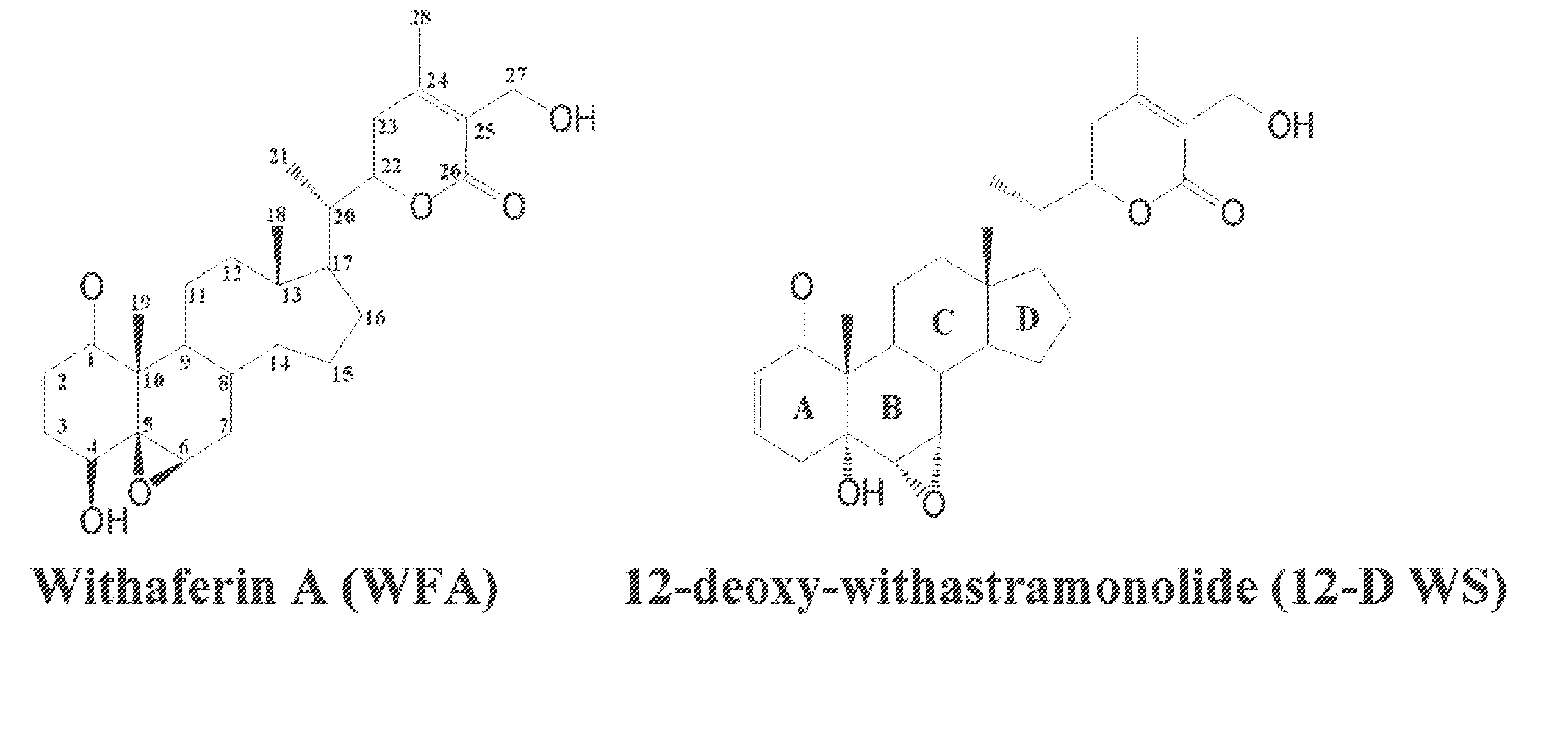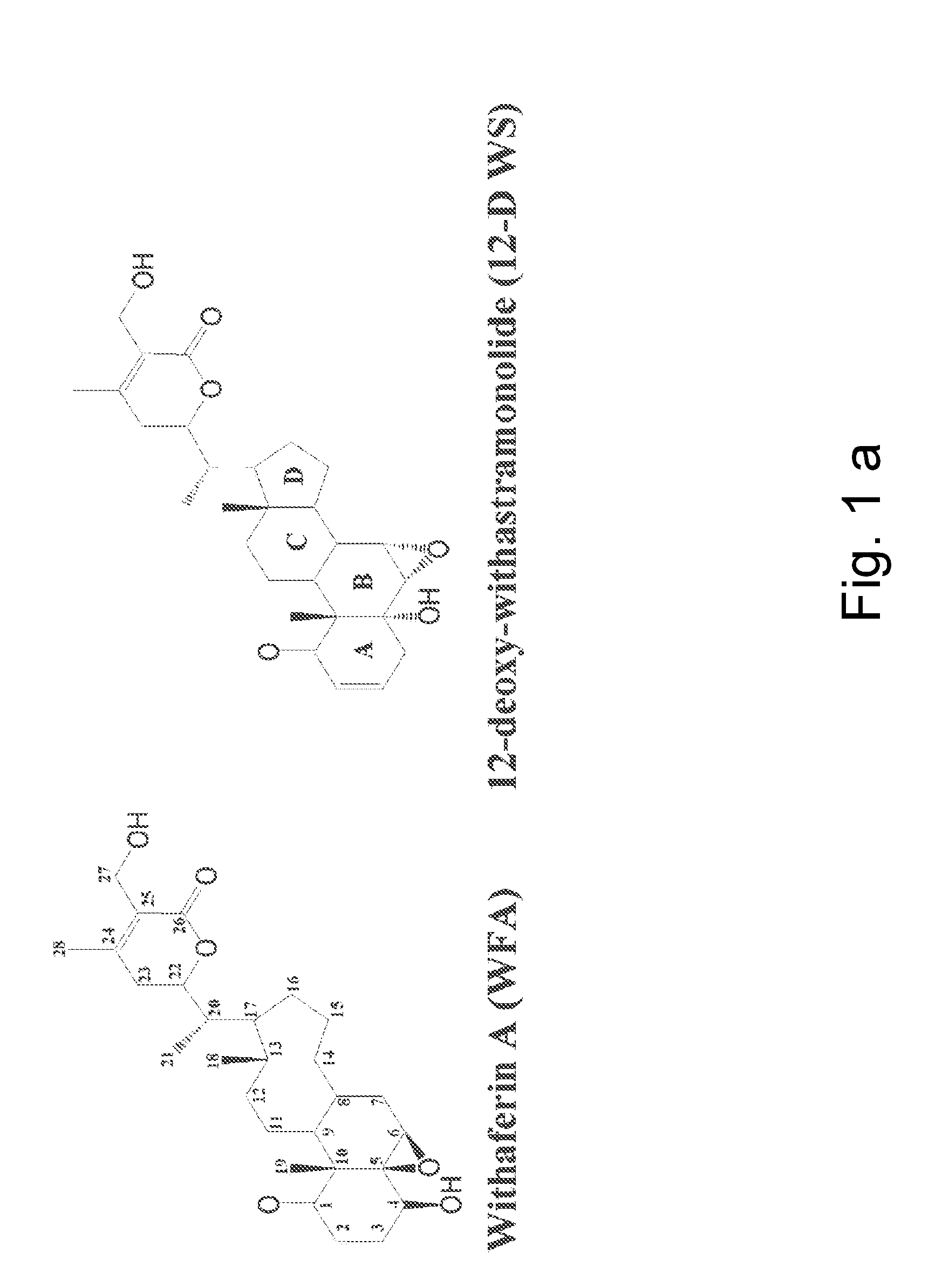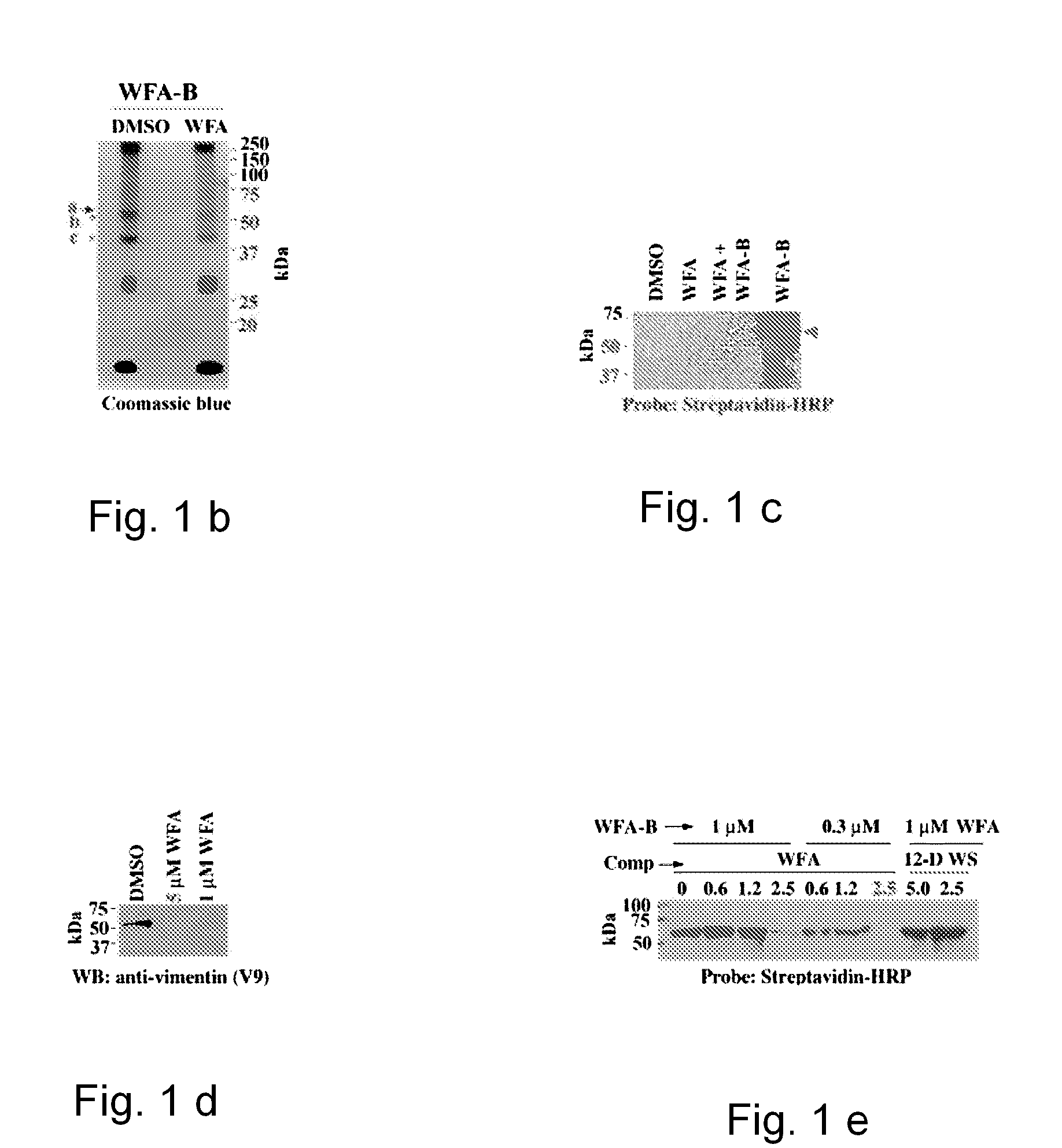Withanolides, probes and binding targets and methods of use thereof
a technology of probes and anolides, applied in the field of withanolides, probes and binding targets, can solve the problems of inability to directly isolate the binding target of this agent, inability to achieve the full potential of isolating the binding target for small molecules, and high throughput screening
- Summary
- Abstract
- Description
- Claims
- Application Information
AI Technical Summary
Benefits of technology
Problems solved by technology
Method used
Image
Examples
Embodiment Construction
[0047]A novel withanolide chemical genetic probe is used to identify, in vivo, the binding target of withaferin A, which is the intermediate filament type III protein vimentin. For example, a withanolide-based small molecule is used in a screening method to screen drug candidates that target intermediate filament type III proteins. The method includes introducing a tagged linker covalently bonded to the withanolide molecule to form a withanolide analog. The linker may be a C1-C20 long hydrocarbon chain linker and the affinity tag can be a biotin moiety.
[0048]As a result, the linker spaces the affinity group sufficiently from the small molecule moiety so as to prevent the affinity tag from interfering with the normal binding of the small molecule with its target. Accordingly, the present invention allows for a more accurate identification of a small molecule's binding site on a target and identification of the target binding sites without the affinity group interfering with the bindi...
PUM
| Property | Measurement | Unit |
|---|---|---|
| Fluorescence | aaaaa | aaaaa |
| Affinity | aaaaa | aaaaa |
| Radioactivity | aaaaa | aaaaa |
Abstract
Description
Claims
Application Information
 Login to View More
Login to View More - R&D
- Intellectual Property
- Life Sciences
- Materials
- Tech Scout
- Unparalleled Data Quality
- Higher Quality Content
- 60% Fewer Hallucinations
Browse by: Latest US Patents, China's latest patents, Technical Efficacy Thesaurus, Application Domain, Technology Topic, Popular Technical Reports.
© 2025 PatSnap. All rights reserved.Legal|Privacy policy|Modern Slavery Act Transparency Statement|Sitemap|About US| Contact US: help@patsnap.com



